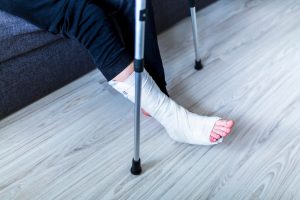Riding a motorbike at any time of the year presents a unique set of risks and in winter, the risks increase several times over. Wet roads, poor visibility and overall harsher conditions of winter all combine to create less-than-optimum conditions for two-wheelers. But that does not necessarily mean you have no other option but to wrap up your motorbike and store it away during the winter months. With the proper precautions, you can protect yourself from motorbike accidents in winter.
A word of caution – only experienced riders should attempt riding in winter. Winter road conditions can be truly challenging for new riders. It’s not worth the risk.
Hazards Of Riding A Motorbike In Winter
Slippery Surfaces
Persistent rain and snow can make the roads slippery and slushy. If you’ve been riding a bike for any length of time, you know how difficult it can be to control the bike when riding over a wet patch of road. Imagine how much more difficult it can be when the entire stretch of road is wet and slippery.
Poor Visibility
The dull, foggy weather conditions that are typically prevalent across the UK during winter can make it difficult for you to see far ahead on the road. Without sufficient warning of the obstacles in front of you, you are more likely to hit that pothole in your path or hit the curb when turning.
Focusing On Your Discomfort
Riding in the cold for a long time can be numbing. The discomfort from the extreme cold can make it difficult to stay focused on riding safely. All you can think of is staying warm.
If you’ve built up a sweat under your warm clothes, that moisture against your body can also lead to hypothermia because it causes your body temperature to drop.
Protective Measures Before Heading Out On Your Motorbike
Prep Your Motorbike
Get your bike serviced by a professional mechanic before you take it out on the winter roads. You want to make sure that all components, from the brakes and the headlights to the indicators and brake lights, are working perfectly.
The importance of checking the tyres cannot be stressed enough. If the treads look worn out, do not take it out on the road. When tyres are worn out they do not handle as well and can compromise your safety. They are also more prone to punctures. You do not want to be stuck miles away from home with a punctured tyre at any time of the year and definitely not when it is freezing cold.
Inspect your tyres regularly throughout the winter. If the tread wear looks like it is less than 50%, it is time to consider outfitting your motorbike with new tyres.
If you do a lot of long-distance riding, you may want to consider using mountain bike tyres during the winter season.
The right air pressure is important too as it affects the stability and traction of the bike. When riding your motorbike in winter, it is always advisable to keep the tyre pressure slightly lower than what is recommended during summer.
Never Set Out With Cold Tyres
Cold tyres have lesser traction, which increases the risk of slipping. Combine reduced traction with wet or slippery roads and the risk increases several times over.
Take time to warm your tyres by accelerating a few times before you head out. Once on the road, accelerate and decelerate a few times. Do this after every stop, even if it is a brief stop at a traffic light.
Use Proper Winter Biking Gear
Proper winter biking gear should incorporate two crucial features – it should protect you from the biting cold and it should protect you from injuries in case of an accident.
Proper riding gear for winter should include:
- Layered clothing so you can peel off a few layers when it gets too warm and add them back on if you are feeling too cold for comfort.
- Protective outer clothing that is waterproof, wind-resistant and highly visible so you get the best combination of comfort and protection while riding.
- Specially designed internal body armour that offers additional protection against grievous injuries in case of an accident.
- High visibility clothing or neon strips attached to the outer clothing.
- A full-faced helmet to protect your face from the wind, rain and snow while riding and to protect you from serious injuries in case of an accident.
- Properly fitting riding gloves that are specially designed to keep your fingers warm without coming in the way of handling the controls.
- A good, sturdy pair of motorbike boots that fit well, have a good grip and are waterproof.
Don’t Take The Roads Or The Weather For Granted
Inclement weather, poor visibility and bad roads can get the better of even the most experienced riders if you are not careful. When riding, use common sense and observe the rule of the road. Don’t take unnecessary risks like accelerating suddenly, braking suddenly or trying to do any stunts on the road. This is not the time or place.
Cut down your speed even further when taking a turn or if you are riding on icy patches or snow-filled roads.
When riding, always stay focused and pay attention to what is happening in front of you. Keep sufficient space between your car and the vehicle in front of you. That extra room will help you avoid crashing into the car in front of you if your motorbike slips.
If you know an area is accident-prone, avoid it if possible.
Last But Not Least
Always check weather conditions before you head out. Listen to the forecast. If heavy rain or snow is expected, you must weigh the risks and only take your motorbike out if it is absolutely necessary.
If you must go out, be even more careful about all protective measures before leaving home and on the road.



